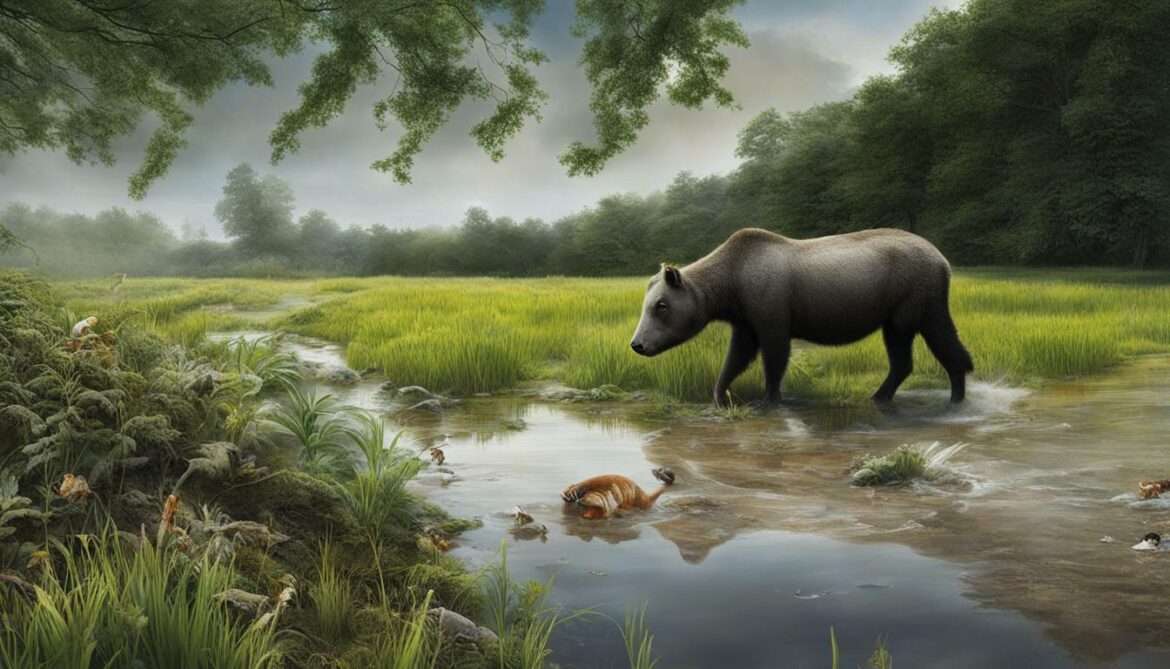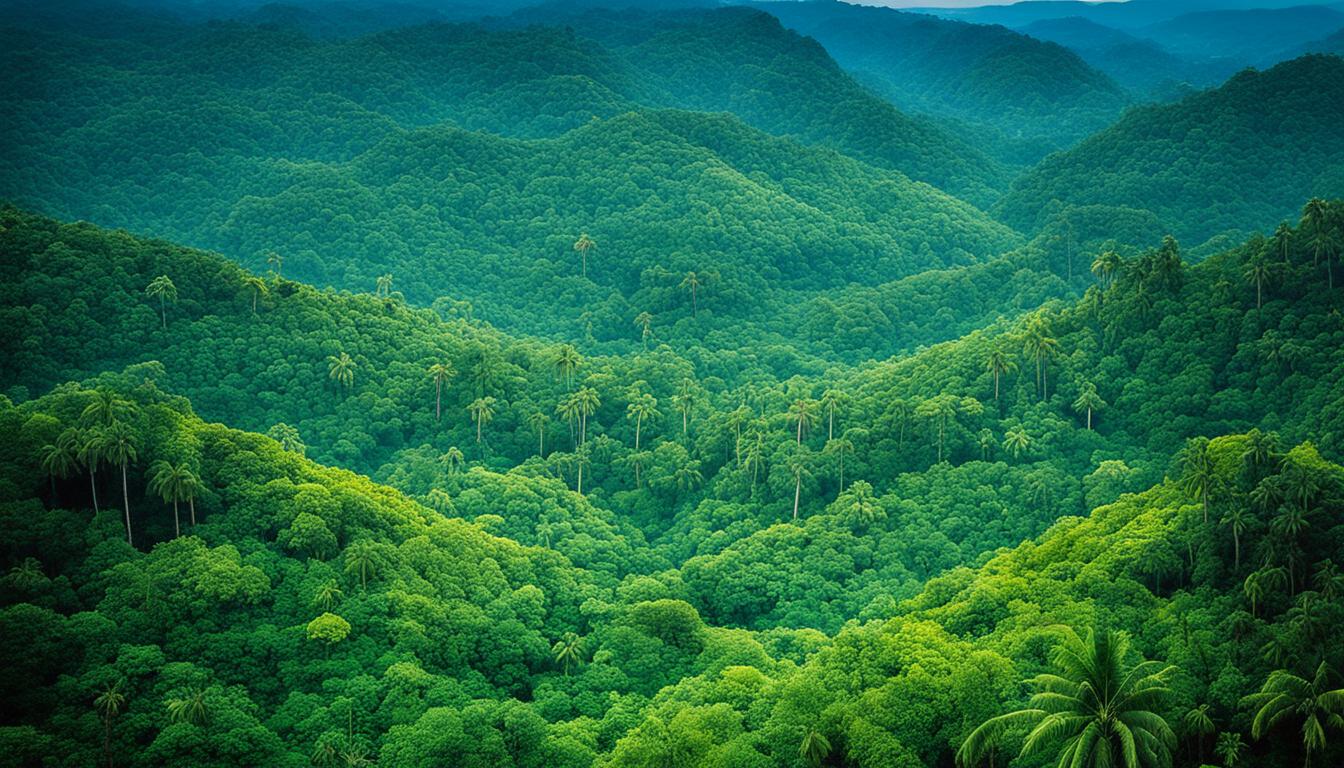Belgium Biodiversity: Animal and Plant Species and What Is Under Threat
Welcome to the rich biodiversity of Belgium, where a diverse range of animal and plant species thrive. However, this vibrant ecosystem is facing numerous threats that need immediate attention.
Key Takeaways:
- Belgium is home to a remarkable diversity of animal and plant species.
- However, between 20% and 70% of species in Belgium are under threat.
- Habitat loss, pollution, climate change, and invasive species are among the major threats to Belgium’s biodiversity.
- Preserving natural habitats and implementing conservation initiatives are crucial for the survival of Belgium’s animal and plant species.
- Environmental protection measures and eco-friendly initiatives are being undertaken to support biodiversity conservation in Belgium.
The Remarkable Diversity of Species in Belgium
Belgium may be small in size, but it boasts a remarkable diversity of species, with an estimated total of over 55,000 animal and plant species calling this country their home. This rich biodiversity is a testament to the varied habitats and ecosystems found within Belgium’s borders. From the dense forests of the Ardennes to the expansive wetlands of the Flemish region, each area provides a unique environment that supports a wide range of flora and fauna.

One of the notable features of Belgium’s biodiversity is the presence of several species that are considered rare or endangered. These include the European otter, the wildcat, and the European tree frog. Efforts are being made to protect and conserve these species, with the establishment of protected areas and conservation initiatives aimed at safeguarding their habitats.
Belgium’s diverse range of species also extends to its marine environment. Along its coastline, you can find a variety of marine mammals, such as seals and porpoises. The North Sea, which borders Belgium, is teeming with marine life, including a wide array of fish species and seabirds.
Table: Endangered Species in Belgium
| Species | Status |
|---|---|
| European Otter | Endangered |
| Wildcat | Endangered |
| European Tree Frog | Endangered |
In addition to its remarkable diversity of species, Belgium’s biodiversity also plays a crucial role in providing various ecosystem services. These services include carbon sequestration, air and water purification, and the maintenance of healthy and resilient ecosystems. The value of these services has been estimated to be in the range of EUR 800 million to 1.2 billion, reflecting the importance of preserving Belgium’s natural habitats.
Protecting and conserving Belgium’s biodiversity is not only essential for the survival of its animal and plant species but also for the overall well-being of its ecosystems and the services they provide. It requires the collaboration and efforts of various stakeholders, including the government, scientists, environmental organizations, and the general public. By working together, we can ensure the long-term sustainability of Belgium’s remarkable biodiversity.
Threats to Belgium’s Biodiversity
Unfortunately, Belgium’s rich biodiversity is under threat from various sources, including habitat destruction, pollution, and the impacts of climate change. These threats pose significant challenges to the survival of animal and plant species in the country. Conservation efforts are crucial in protecting these valuable ecosystems and ensuring the long-term sustainability of Belgium’s biodiversity.
Habitat destruction is one of the primary threats to Belgium’s biodiversity. As urbanization and industrialization continue to expand, natural habitats are being fragmented and destroyed, leading to the loss of critical ecosystems for many species. The conversion of land for agriculture and infrastructure development further exacerbates this issue. It is essential to prioritize the preservation and restoration of natural habitats to maintain the diversity of animal and plant species.
Pollution, particularly from industrial and agricultural activities, poses a significant threat to Belgium’s biodiversity. Chemical pollutants and excess nutrients from runoff can contaminate water bodies, degrade soil quality, and harm both aquatic and terrestrial species. Additionally, air pollution, including emissions from transport and industries, can have detrimental effects on the health and well-being of ecosystems. Strict regulations and sustainable practices are necessary to mitigate pollution and safeguard the integrity of Belgium’s biodiversity.
The impacts of climate change, such as rising temperatures, changing rainfall patterns, and extreme weather events, also endanger Belgium’s biodiversity. These changes can disrupt ecosystems, alter the behavior and distribution of species, and increase the susceptibility of certain populations to diseases. Adapting to and mitigating the effects of climate change through sustainable land and water management, as well as the protection of vulnerable habitats, are paramount for preserving Belgium’s unique biodiversity.
| Threat | Impact |
|---|---|
| Habitat destruction | Loss of critical ecosystems and fragmentation of natural habitats |
| Pollution | Contamination of water bodies, degradation of soil quality, and harm to aquatic and terrestrial species |
| Climate change | Disruption of ecosystems, alteration of species behavior and distribution, and increased vulnerability to diseases |
Conservation in Belgium
Conservation efforts play a vital role in mitigating the threats to Belgium’s biodiversity. The preservation and restoration of natural habitats, such as forests, wetlands, and meadows, are key strategies for maintaining the diversity of species. Protected areas, national parks, and nature reserves provide refuge for endangered plants and animals, allowing them to thrive and reproduce.
In addition to habitat conservation, sustainable land and water management practices are crucial. By implementing measures to reduce pollution from industrial and agricultural sources, such as stricter regulations and the promotion of eco-friendly practices, Belgium can minimize the negative impacts on its biodiversity. Collaboration among government agencies, researchers, and conservation organizations is essential to ensure effective conservation strategies and the sharing of knowledge and resources.
Furthermore, raising public awareness about the importance of biodiversity conservation and engaging communities in conservation activities are essential for long-term success. Encouraging individuals and businesses to adopt sustainable practices, supporting local conservation initiatives, and promoting eco-tourism can contribute to the protection and appreciation of Belgium’s unique natural heritage.
“The preservation of Belgium’s biodiversity is crucial for the well-being of both current and future generations. It is our collective responsibility to protect and conserve these valuable ecosystems for the benefit of all species.”
In conclusion, Belgium’s biodiversity is facing significant threats due to habitat destruction, pollution, and climate change. The conservation of natural habitats, sustainable land and water management practices, and public engagement are vital in safeguarding the country’s diverse animal and plant species. By prioritizing biodiversity conservation, Belgium can contribute to global efforts in preserving our planet’s natural heritage and ensuring a sustainable future.

The Importance of Preserving Belgium’s Natural Habitats
The preservation of Belgium’s natural habitats is of utmost importance in ensuring the survival of its diverse range of animal and plant species. Protected areas and other conservation initiatives play a vital role in maintaining the health and resilience of these habitats.
Belgium is home to a remarkable diversity of species, with an estimated total of over 55,000. However, a significant percentage of species per main group are threatened, ranging from 20% to 70%, depending on the group and region of the country. This highlights the urgent need for conservation efforts to protect and restore natural habitats.
Economic considerations further emphasize the importance of biodiversity conservation. Studies have shown that protected areas, such as the Natura 2000 network in Flanders, provide essential benefits to society, including carbon dioxide storage, air pollution reduction, water purification, and recreational opportunities. The estimated value of Natura 2000 areas alone is between EUR 800 million to 1.2 billion.
The Role of Protected Areas
Protected areas, including national parks and nature reserves, play a crucial role in preserving Belgium’s natural habitats. These areas provide safe havens for threatened species and enable the maintenance of ecological processes. They act as biodiversity hotspots, supporting a wide range of plant and animal life.
In addition to protecting species, protected areas also contribute to the provision of ecosystem services, such as clean water and air, soil fertility, and climate regulation. They help maintain ecological balance and promote the overall health of the environment.
| Benefits of Protected Areas in Belgium |
|---|
| Carbon dioxide storage |
| Air pollution reduction |
| Water purification |
| Recreational opportunities |
Conservation initiatives, such as the establishment and management of protected areas, should be prioritized and supported by government agencies, non-governmental organizations, and the general public. Collaborative efforts are essential to ensure the long-term preservation of Belgium’s natural habitats and the continued existence of its unique animal and plant species.

Environmental Protection and Eco-Friendly Initiatives in Belgium
Belgium is committed to environmental protection and has implemented numerous eco-friendly initiatives to promote biodiversity conservation. From sustainable practices to the active involvement of stakeholders, the country is taking significant steps towards protecting its unique ecosystems.
One notable initiative is the Natura 2000 network in Flanders, which covers 168,000 hectares of protected areas. This network provides a range of benefits, including the storage of over 34 million tonnes of carbon dioxide annually, the removal of 4,000 to 8,000 tonnes of fine dust from the air each year, and the purification of 16 million cubic meters of water annually. These protected areas also contribute to the overall well-being of the population, with an estimated gain of 2,100 years of healthy life years and attracting 26 to 43 million visitors per year. The economic value of these services is estimated to be between EUR 800 million to 1.2 billion.
Belgium’s updated National Biodiversity Strategy (NBS) aims to align with the Aichi targets of the United Nations Convention on Biological Diversity (CBD). It includes quantitative targets, such as conserving at least 17% of terrestrial and inland water areas and 10% of coastal and marine areas through well-managed protected areas. The strategy also focuses on maintaining and enhancing ecosystems by establishing a green infrastructure and restoring at least 15% of degraded ecosystems. Additionally, Belgium is working towards aligning its NBS and regional biodiversity policies with the ambitions of the new EU Biodiversity Strategy for 2030, which aims to protect 30% of land and sea and restore degraded ecosystems.
Table: Environmental Protection in Belgium
| Initiative | Main Objective |
|---|---|
| Sustainable Practices | Promote environmentally friendly practices in various sectors. |
| Protected Areas | Establish and manage protected areas to conserve biodiversity. |
| Green Infrastructure | Create a network of interconnected green spaces to enhance ecosystem resilience. |
| Ecosystem Restoration | Restore degraded ecosystems to improve biodiversity and ecosystem services. |
| Stakeholder Engagement | Involve various stakeholders in biodiversity conservation efforts. |
Belgium’s commitment to environmental protection and its eco-friendly initiatives demonstrate the country’s dedication to preserving its natural heritage. By implementing sustainable practices, establishing protected areas, and engaging stakeholders, Belgium is working towards safeguarding its biodiversity for future generations.

Conclusion
Protecting Belgium’s biodiversity is not just a responsibility, but a necessity for the future of our planet. By working together and taking action to preserve these precious ecosystems, we can ensure a sustainable and vibrant future for the diverse range of animal and plant species in Belgium.
Belgium’s remarkable diversity of species is a testament to the country’s rich natural heritage. However, this biodiversity is under threat, with a significant number of species facing endangerment. The loss of habitats, pollution, climate change, and invasive species are just some of the challenges that need to be addressed in order to protect Belgium’s biodiversity.
Preserving Belgium’s natural habitats is of utmost importance as these habitats serve as the foundation for the survival and thriving of animal and plant species. Protected areas and other conservation initiatives play a vital role in safeguarding these habitats, allowing for the maintenance of biodiversity and the protection of ecosystem services.
Belgium has made efforts in environmental protection and the implementation of eco-friendly initiatives to support biodiversity conservation. Sustainable practices and the involvement of various stakeholders are key in these initiatives. It is crucial that these efforts continue to be strengthened and expanded to ensure the long-term preservation of Belgium’s biodiversity.
In conclusion, the preservation of Belgium’s biodiversity is a collective responsibility that requires concerted efforts from individuals, communities, organizations, and governments. By valuing and protecting the animal and plant species that are unique to Belgium, we can contribute to the overall conservation of global biodiversity and secure a sustainable future for generations to come.
FAQ
Q: What is the remarkable diversity of species in Belgium?
A: Belgium has a remarkable diversity of animal and plant species, with an estimated total number of over 55,000 species living in the country.
Q: What are the threats to Belgium’s biodiversity?
A: Belgium’s biodiversity faces threats such as habitat loss, pollution, climate change, and invasive species.
Q: How important is the preservation of Belgium’s natural habitats?
A: Preserving Belgium’s natural habitats is crucial for the long-term survival of its animal and plant species. Protected areas and conservation initiatives play a vital role in safeguarding these habitats.
Q: What environmental protection measures and eco-friendly initiatives are implemented in Belgium?
A: Belgium has implemented various environmental protection measures and eco-friendly initiatives to support biodiversity conservation. These efforts promote sustainable practices and involve multiple stakeholders.








